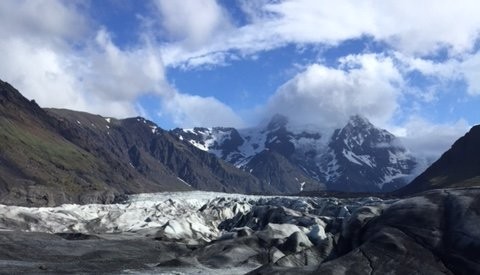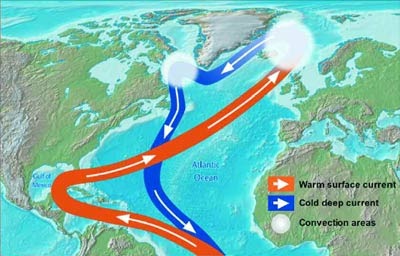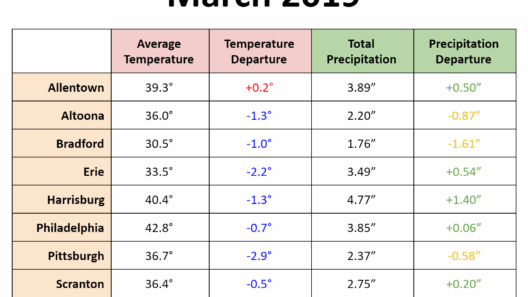Chile presents an extraordinary tableau of climate diversity, stretching from its arid northern deserts to the frigid glacial expanses in the south. This gradient plays a crucial role in shaping ecosystems, agriculture, and local traditions, inviting us to not only explore the geographical variations, but also to contemplate broader climatic phenomena and their implications for global ecology.
The Atacama Desert, located in the north, is often heralded as the driest non-polar desert on the planet. With its astonishing topography, marked by salt flats and rugged mountains, it embodies a stark and austere beauty. Rainfall is quite literally negligible here, with some regions averaging less than 1 millimeter per year. Yet paradoxically, this arid setting supports a unique biosphere. Adaptations are key to survival in such an environment: organisms here, from resilient cacti to ethereal desert flowers, employ strategies that allow them to thrive on minimal hydration. Furthermore, the Atacama is home to a range of mineral riches, facilitating key industries, including mining and agriculture, albeit at high environmental costs.
Transitioning southward, one enters the Central Valley, a region that showcases a marked shift in climate and sustainability practices. This area boasts a Mediterranean climate characterized by wet winters and dry summers. The agricultural sector flourishes here due to the fertility of the land. Vineyards, orchards, and farms abound, producing many of Chile’s exports. Yet, the success of this sector inevitably raises questions about water usage amidst a backdrop of increasing drought conditions. Sustainable practices—such as drip irrigation and organic farming—are becoming imperative for maintaining a balance between economic viability and ecological preservation.
Beyond the Central Valley lies the more temperate regions of southern Chile. Here, moisture-laden winds from the Pacific Ocean result in a lush, verdant landscape. The burgeoning forests of the Valdivian temperate rainforests reveal a rich biodiversity, sheltering an array of flora and fauna, including endemic species such as the endangered Chilean wine palm and the remarkable pudú, the world’s smallest deer. These ecosystems, however, face threats from deforestation, climate change, and the invasive species that compromise native habitats. A commitment to conservation has emerged, underscoring the necessity to protect these irreplaceable biome treasures.
Further south, in regions such as Patagonia, one encounters an arresting contrast—the glacial climes that inspire awe and wonder. The ice fields of Southern Patagonia are among the largest reserves of fresh water on the planet and are vital in the global context of climate regulation. They play a key role in mitigating temperature increases around the globe. However, these glaciers are experiencing rapid melt due to rising temperatures—a phenomenon that signals an urgent call to action regarding climate change. The visual spectacle of calving glaciers, which push colossal chunks of ice into the sea, tells an alarming tale of a rapidly shifting climate system.
Chile’s unique geographical position along the Pacific Ring of Fire also contributes to its climatic incongruities. The Andes mountains create distinct rain shadows, leading to incredibly diverse microclimates. This geographical anomaly fosters a variety of agricultural practices, from winemaking in the valleys to the cultivation of quinoa in the altiplano of the high Andes. These climates enable farmers to produce a palette of flavors and ingredients that play a pivotal role in both local gastronomy and global culinary trends.
Climate change is reshaping the landscape of opportunities and challenges that Chilean communities face. The country is acutely vulnerable to environmental shifts; natural disasters such as droughts, wildfires, and flooding have increased in frequency and intensity. Yet, this adversity has forged a resilient spirit among the populace. Mechanisms aimed at climate adaptation are being developed, including reforestation initiatives, resilient crop techniques, and innovative water conservation strategies. The quest for sustainability has galvanized researchers, policymakers, and communities to begin envisioning a future that honors both human and ecological needs.
Coastal communities, too, highlight the intricate relationship between climate and culture. The fishing industry, a cornerstone of livelihoods, is at the mercy of changing sea temperatures and acidification, which simultaneously affects fish migration patterns and the health of marine ecosystems. Traditional practices are being re-evaluated in favor of more sustainable approaches, leading to the rise of community-supported fisheries. This paradigm shift seeks to reconcile ecological balance with economic sustainability, ensuring that future generations inherit a vibrant marine landscape.
Ultimately, Chile’s climate spectrum compels us to reconsider our relationship with the environment. From the austere beauty of the Atacama, through the fertile valleys, and down to the glacial expanses of Patagonia, each region is a microcosm of broader environmental narratives. As challenges mount from climate change, the stories emerging from these contrasting landscapes are those of adaptability, resilience, and an unwavering commitment to stewardship of the Earth.
As we gaze upon Chile’s diverse climate landscape, the call to action becomes clearer. Climate change is not simply an abstract concept; it is an immediate reality that requires our collective attention and accountability. The spectrum of climates in Chile not only invites curiosity but promises a profound shift in our understanding of the interconnectedness of nature, human activity, and the imperatives of sustainability.






